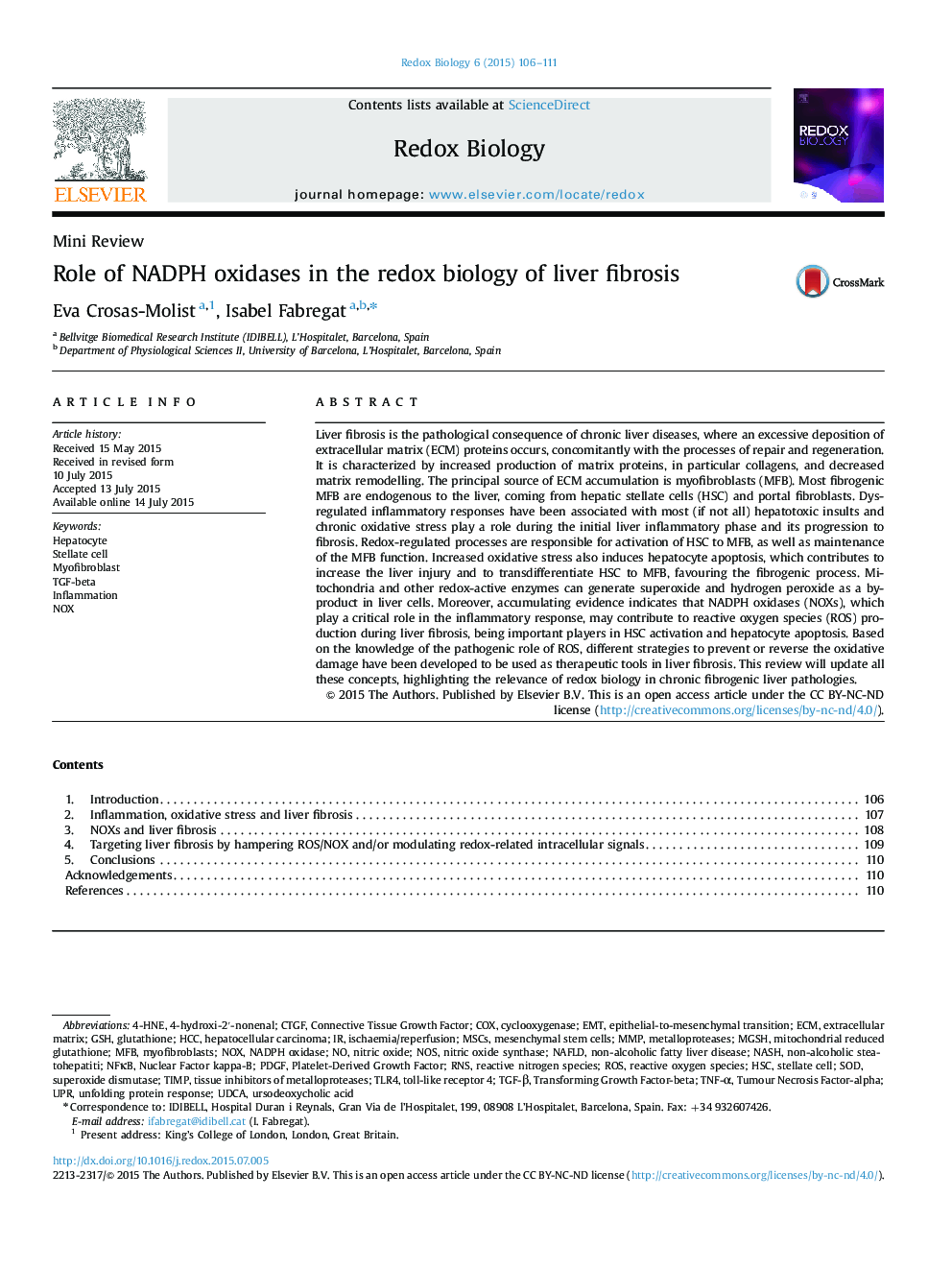| کد مقاله | کد نشریه | سال انتشار | مقاله انگلیسی | نسخه تمام متن |
|---|---|---|---|---|
| 1922911 | 1535844 | 2015 | 6 صفحه PDF | دانلود رایگان |

Oxidative stress is a major cause for initiation/progression of liver fibrosis.Redox-regulated processes activate hepatic stellate cells to myofibroblasts.Increased oxidative stress induces hepatocyte apoptosis.NOX inhibitors are considered as a new strategy to prevent/reverse liver fibrosis.NADPH oxidases (NOX) have been involved in liver fibrogenic responses.
Liver fibrosis is the pathological consequence of chronic liver diseases, where an excessive deposition of extracellular matrix (ECM) proteins occurs, concomitantly with the processes of repair and regeneration. It is characterized by increased production of matrix proteins, in particular collagens, and decreased matrix remodelling. The principal source of ECM accumulation is myofibroblasts (MFB). Most fibrogenic MFB are endogenous to the liver, coming from hepatic stellate cells (HSC) and portal fibroblasts. Dysregulated inflammatory responses have been associated with most (if not all) hepatotoxic insults and chronic oxidative stress play a role during the initial liver inflammatory phase and its progression to fibrosis. Redox-regulated processes are responsible for activation of HSC to MFB, as well as maintenance of the MFB function. Increased oxidative stress also induces hepatocyte apoptosis, which contributes to increase the liver injury and to transdifferentiate HSC to MFB, favouring the fibrogenic process. Mitochondria and other redox-active enzymes can generate superoxide and hydrogen peroxide as a by-product in liver cells. Moreover, accumulating evidence indicates that NADPH oxidases (NOXs), which play a critical role in the inflammatory response, may contribute to reactive oxygen species (ROS) production during liver fibrosis, being important players in HSC activation and hepatocyte apoptosis. Based on the knowledge of the pathogenic role of ROS, different strategies to prevent or reverse the oxidative damage have been developed to be used as therapeutic tools in liver fibrosis. This review will update all these concepts, highlighting the relevance of redox biology in chronic fibrogenic liver pathologies.
Figure optionsDownload as PowerPoint slide
Journal: Redox Biology - Volume 6, December 2015, Pages 106–111